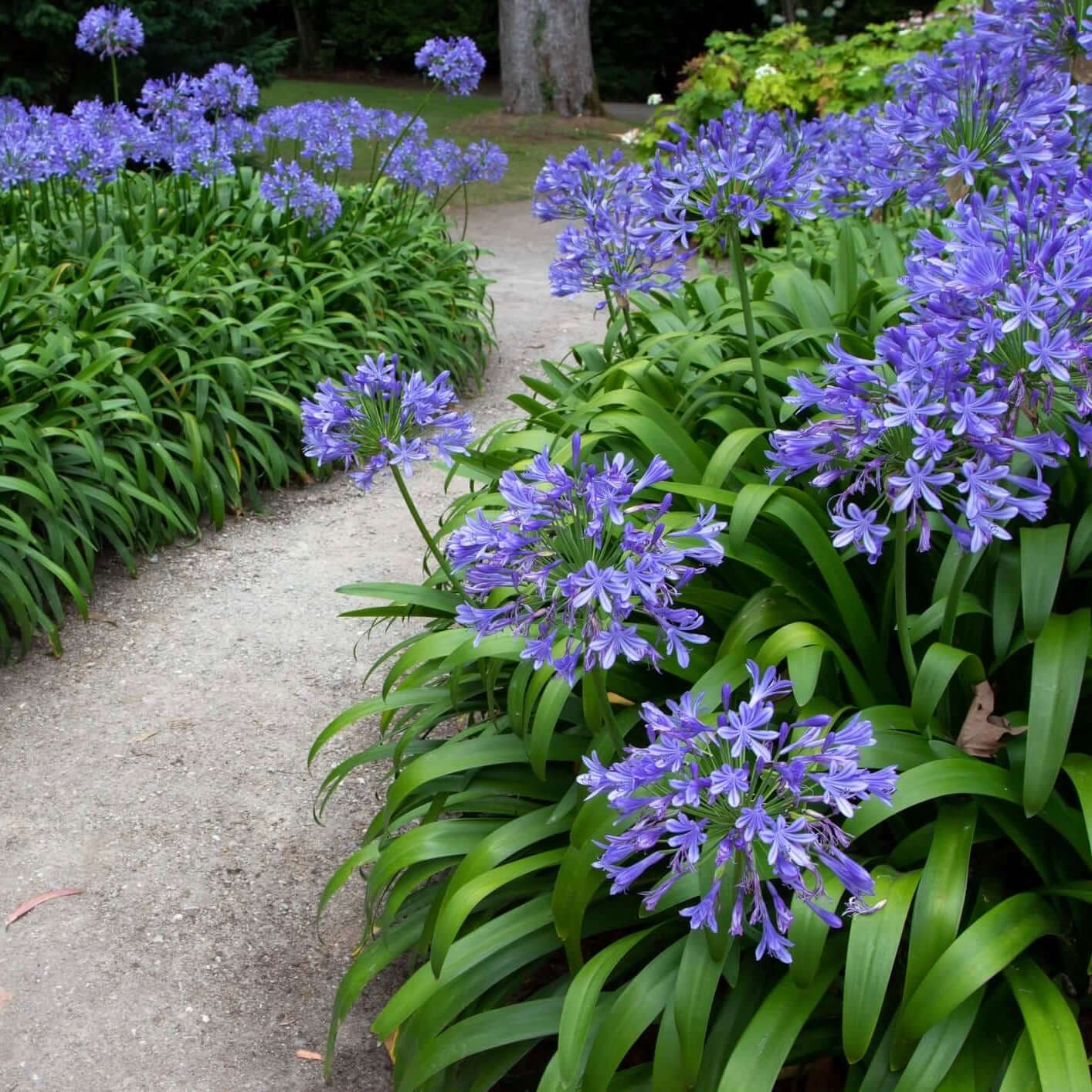Sensational Agapanthus: Enhancing Your Garden's Charm
Sensational Agapanthus: Enhancing Your Garden's Charm
Blog Article
Letting Loose the Secret to Successful Agapanthus Farming: Advice for a Flourishing Garden
In the realm of horticulture, growing agapanthus efficiently needs a tactical strategy that incorporates various aspects of plant care. By understanding the subtleties of agapanthus cultivation, one can produce an environment where these plants thrive and flower generously.
Growing Agapanthus: Finest Practices
When growing Agapanthus, correct soil preparation is essential for guaranteeing successful growth and advancement of these stunning flowers. Agapanthus, generally referred to as Lily of the Nile or African lily, grows in well-draining soil with a slightly acidic to neutral pH level - Agapanthus. Before planting, it is essential to amend hefty clay dirts with raw material such as garden compost or peat moss to improve drain and offer essential nutrients for the plants
To plant Agapanthus, select an area that gets complete sunshine to partial shade, as this will promote healthy development and abundant flowering. Dig a hole twice the diameter of the plant's origin ball and position the Agapanthus at the same depth it was previously growing. Carefully backfill the hole with soil, weighing down firmly to eliminate any air pockets around the origins.
Water the freshly grown Agapanthus extensively and continue to keep the soil uniformly moist, specifically throughout the plant's energetic expanding period. Agapanthus. Using a balanced fertilizer once a month can further sustain the plant's growth and blooming. By adhering to these ideal techniques for growing Agapanthus, you can develop a sensational display screen of these exciting flowers in your yard
Suitable Soil Conditions for Agapanthus
For optimal growth and growing success of Agapanthus plants, guaranteeing the soil conditions are optimal is critical. Agapanthus thrives in well-draining dirt with a somewhat acidic to neutral pH level varying from 6.0 to 7.0. This kind of dirt permits for sufficient water drainage, protecting against waterlogging which can lead to root rot. To enhance dirt drain, take into consideration adding organic issue such as garden compost or peat moss when preparing the planting website. In addition, Agapanthus likes dirt that is abundant in nutrients, so including a balanced fertilizer throughout the expanding period can promote healthy development and vibrant blossoms.

Watering and Fertilizing Tips
To make sure healthy and balanced growth and vibrant flowers, proper watering and feeding strategies are important for successful Agapanthus growing. Agapanthus plants profit from routine watering, particularly during the growing period.
When it involves fertilizing Agapanthus, a balanced plant food with equivalent components nitrogen, phosphorus, and potassium can be used in the spring to promote healthy growth and blooming. Slow-release fertilizers are excellent for supplying nutrients progressively over a prolonged period. Prevent over-fertilizing, as this can cause too much foliage growth at the expenditure of flowers.
Additionally, including organic matter like garden compost into the soil can boost nutrient degrees and improve dirt structure, helping in the total health and wellness of the Agapanthus plants. By adhering to these watering and fertilizing suggestions, garden enthusiasts can guarantee their Agapanthus plants flourish and create spectacular displays of flowers.
Trimming and Deadheading Methods
Proper pruning and deadheading strategies play a crucial function in keeping the wellness and looks of Agapanthus plants, complementing the necessary techniques of watering and fertilizing for effective farming. Trimming Agapanthus entails getting rid of spent blossom heads, dead or yellowing fallen leaves, and total shaping of the plant to advertise much better development. Deadheading, the process of getting rid of discolored flowers, not only boosts the plant's appearance however likewise encourages further growing.
When deadheading Agapanthus, it is suggested to clip off the flower stem at the base making use of sharp, clean shears. This procedure reroutes the plant's power from seed manufacturing back Discover More Here into root and vegetation growth, promoting a healthier and a lot more robust plant. Regular deadheading can extend the blooming duration of Agapanthus and protect against self-seeding, which can cause congestion.
In terms of pruning, Agapanthus usually gain from a light trim after blossoming to tidy up the plant and encourage fresh development. Cutting down the spent flower stems and eliminating any damaged or dead foliage helps preserve the plant's vigor and overall look. However, web it is important to stay clear of reducing into the crown of the plant, as this can weaken its wellness.

Protecting Agapanthus From Pests and Diseases
Implementing efficient insect and disease management methods is vital to protecting the health and vigor of Agapanthus plants in farming. One common bug that influences Agapanthus is the Agapanthus borer, a caterpillar that passages into the plant, triggering damages to the blossoms and leaves.
In enhancement to bugs, Agapanthus are prone to conditions such as origin rot and fungal leaf spots. By staying attentive and attending to parasite and condition concerns without delay, garden enthusiasts can assist their Agapanthus thrive and thrive.

Conclusion
In final thought, successful farming of agapanthus calls for appropriate planting techniques, ideal dirt conditions, appropriate watering and fertilizing, routine pruning and deadheading, and security from diseases and insects. By following these ideas and tricks, gardeners can make sure a flourishing yard loaded with attractive agapanthus blooms. Agapanthus. Keep in mind to keep regular care and attention to detail to promote the health and durability of these magnificent plants
When growing Agapanthus, appropriate dirt preparation is essential for guaranteeing effective development and growth of these beautiful flowers.Water the newly planted Agapanthus extensively and continue to keep the soil equally damp, especially during the plant's energetic expanding period.For optimal development and growing success of Agapanthus plants, ensuring the soil problems are optimal is critical. When planting or transplanting Agapanthus, make sure the soil is well-prepared to provide the essential structure for you can try these out the plants to develop themselves successfully. One common pest that impacts Agapanthus is the Agapanthus borer, a caterpillar that tunnels right into the plant, triggering damage to the blossoms and fallen leaves.
Report this page